Brand monitoring 101: A guide to tracking brand mentions

Article summary
In this article, we break down the process of brand monitoring with a social listening tool.
With the technological advancements of the current day and age, people from all around the globe can easily engage in a real-time discussion with each other on just about anything. Even more importantly, these discussions can be heard by just about anyone in the world. The vasts of the Web are the place people go to whenever they want to learn about a company or a product, know other people’s opinions, or express their own. The online world is a prime space to build a reputation, gain support for your brand, and connect with potential clients.
Let’s take the case of Ringboost, a company specializing in custom phone numbers supply for businesses as an example. Using Awario as their brand monitoring tool of choice, RingBoost was able to amp up their reputation by connecting with their customers quicker than ever before, uncover new sales prospects that would’ve gone unnoticed otherwise, and expand their online presence to a new platform. And this is just one example of how monitoring brand mentions can be useful.
What is brand monitoring?
Brand monitoring is a continuous activity of tracking multiple media channels with the goal of collecting all the brand mentions for further analysis. It's one of the use cases of social listening, the process of monitoring online content. The data you’d be on the lookout for includes blogs and news articles, posts on various social media, comments to these posts, as well as physical media appearances, like articles in newspapers. Brand monitoring is typically done with the help of social media monitoring tools, such as Awario.
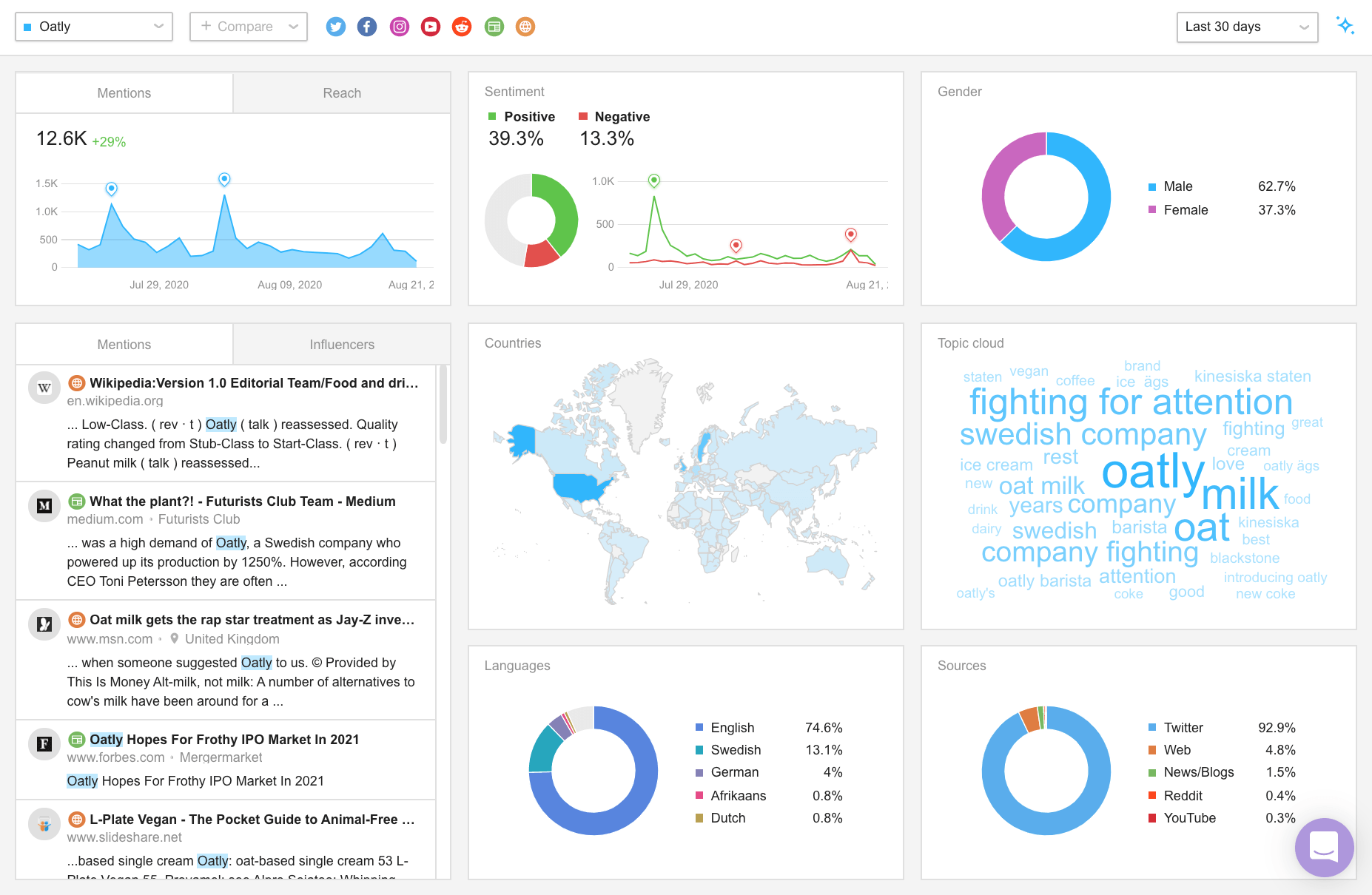
The data you gather can be utilized in a multitude of ways, limited by your creativity only. A few examples would be managing your reputation, discovering potential clients, and identifying the areas of improvement for a product line-up, the company in general, or customer service in particular.
Why is brand monitoring important?
One major advantage brand monitoring brings to the table is the ability to uncover and respond to any feedback the instant it is posted. A swift and proper response to both praise and criticism is key to establishing your customer service team as a full-fledged competitive advantage.
Naturally, the feedback you uncover this way can prove to be a valuable outside perspective on your business, product, or industry as a whole, which may later serve as a guiding star for improvement. On top of all that, brand monitoring allows you to gather insights on your competitors just as well. With it, you’ll be able to see and quickly integrate what worked great for them, and avoid the strategies that didn’t.
Start monitoring your brand with Awario
How to monitor brand mentions effectively?
Brand monitoring is a broad topic with its nuances, so it can be quite easy to get lost. In fact, missing out on valuable online data is simpler than you might think.
Surely, setting up a basic brand monitoring alert can be done with as little as a single keyword — the brand name. However, there’s a good chance that the data from an alert like that will be inconclusive, as people on social media don’t always address the brand with their proper name.
Rather, some may opt to mention a brand by using their social media handles, which can be fairly different to the actual name. Or some may allude to them in the very end of their post by using a couple of hashtags commonly associated with that brand. By monitoring just the brand’s name alone you’re missing out on a lot of valuable data. To prevent that, we’ll go over 6 major points that will help you set up a perfect brand monitoring query in Awario right off the bat:
1. Name variations
Spend some time thinking over all the variations of your brand name. Abbreviations, spelling with or without special characters, common misspellings, shortened names, nicknames, and everything in between will help track conversations that would otherwise remain in the shadows. Moreover, larger brands can use localized brand names, each tailored to a specific market. Keeping track of all of these ensures you get a complete dataset on the brand’s performance.

2. Social media handles and hashtags
Using the social media handles and relevant hashtags ensures you don’t miss out on any conversation, feedback, or support request made via social media. It is quite common to mention just the brand’s handle, but keep in mind that sometimes handles are identical to the brand’s actual name - Apple is a good example of that.
Monitoring the brand's social media handles is critical for customer service teams, as the people asking for help on, say, Twitter also expose the issues they’re having to their follower base and other people. A swift action on a request like that is a prime time for your brand to show how you care for the customers and possibly win the hearts of new potential clients.
Keeping tabs on the hashtags helps you stay on top of conversations related to your industry, product types, marketing ventures, and all the talk online ever-relevant to your business.

3. Negative keywords and links
Negative keywords are instrumental in cutting out the unrelated informational noise from your search results. The posts containing any word or phrase you add to this field will never make it onto your feed. This is extremely useful for brands using common or ambiguous words as their names, or whenever the word you use is a part of another organization’s name.
Adding the website links to the corresponding field allows you to monitor the posts and publications linking to your website (backlinks). Moreover, it allows you to capture these rare posts that don’t mention your brand directly but instead just point to the website at the very end.

4. Keyword formats
Like any other search engine, Awario supports certain search modifiers to help you make your search more accurate. Let’s have a look at a couple of word formats that can help enhance the precision of your search query, depending on what you track.
- Coca-Cola - the most common and most flexible word format is applied whenever you simply type your keyword in. In this format, multiple words are allowed to be in-between the parts of your complex keyword or phrase, while special characters and upper/lower cases are ignored.
- "Coca-Cola" - enclosing your keyword or phrase in quotes applies the phrase format. In this format, Awario will capture exact matches only.
- +"Coca-Cola" - adding a single plus symbol before your keyword applies the symbol-sensitive format. There, special characters, like dots, dashes, hyphens, and any others will be respected. Please note that you need to enclose the keyword in quotes before using this format.
- ++"Coca-Cola" - adding the second plus symbol before your keyword enables case-sensitivity on top of symbol-sensitivity. Thus, Awario will respect both the special characters and upper/lower cases in your keywords.
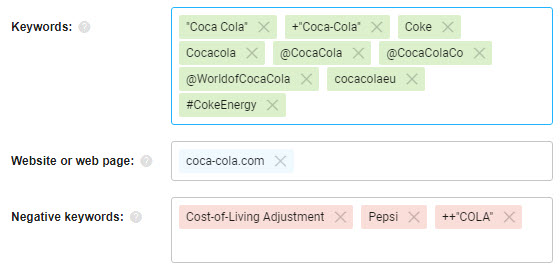
5. Filtering parameters
The refining process doesn’t end with keywords. In Awario, you’re able to set up a couple of filtering parameters to narrow the search down to particular geographical areas, languages, and timeframes. On top of that, you’re free to disable the social media platforms you’re not interested in, as well as blacklist specific accounts and websites that you don’t want to see in your feed.
By signing up I agree to the Terms of Use and Privacy Policy
While these filtering options are fairly self-explanatory, it is worth pointing out that not every social media user and not every website allows to disclose their location. This might impede the data collection if you need to focus on a few specific areas only. Running the Unknown location parameter in your alerts can alleviate that issue, however, it also brings forth the risk of getting drowned in irrelevant data. Thus, it is a good idea to use the Language filter, and use some location-specific words, social media handles and hashtags along with the Country filter.
The Whitelist feature can be used to prioritize data coming from particular social media accounts or websites, and the Strict mode allows you to restrict Awario to whitelisted accounts and websites only.
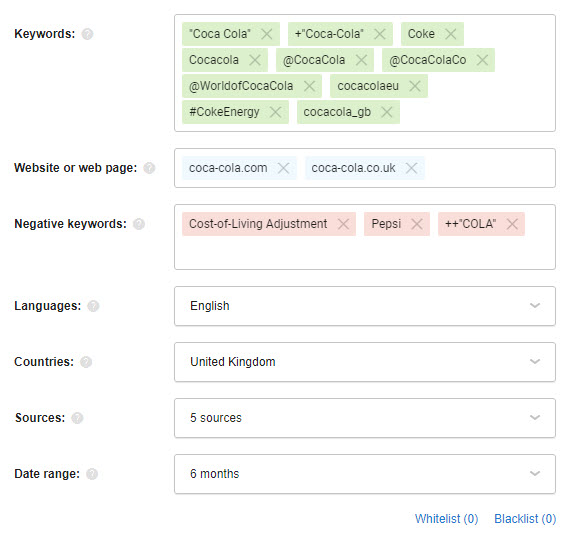
6. Boolean search
The Boolean search mode allows you to create specialized queries by creating keyword groups and using a wide range of operators. It's basically search on steroids, and may take some time to get exactly right. However, the results that a well-written and well-adjusted query will get you compensates all the time you’ve invested in its setup. You can simplify the setup by filling out the fields in the default interface first, then convert that to Boolean, and go tweaking from there:
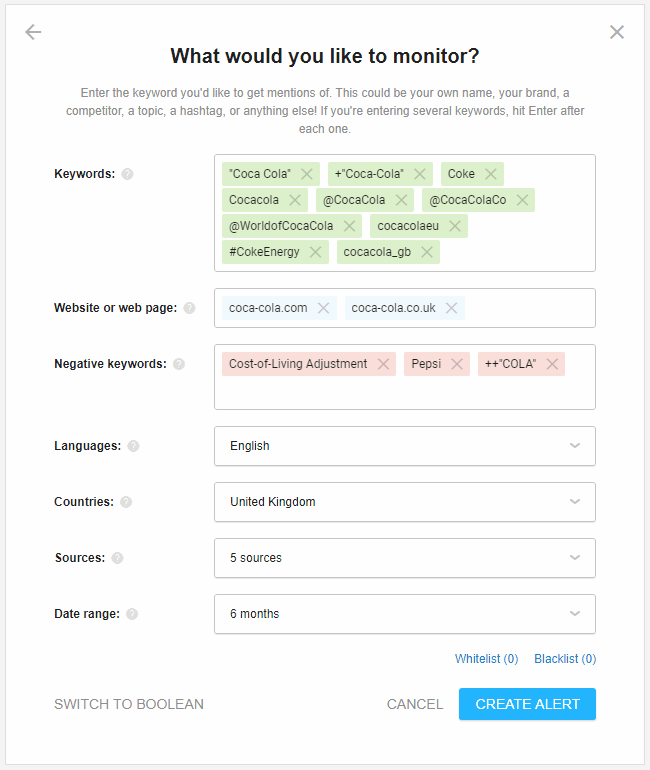
While it might look intimidating at first, the Boolean syntax is fairly simple and straightforward. There’s a handy helper at the bottom of the editing window, as well as a dedicated guide to Boolean we’ve made. You can find more how-to guides in our Training Center.
Naturally, not every search query will require Boolean search to achieve great results. However, going for it unlocks a lot of new setup opportunities, like monitoring giant product line-up of a specific brand with ease, mining leads, or finding linkless mentions for link-building purposes.
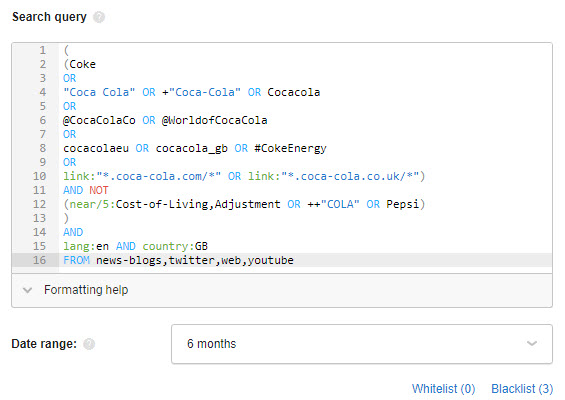
Sample brand monitoring queries
In this section, we’ll be providing a few examples of brand monitoring queries, and explaining what we did along the way. Let’s start with British Airways.
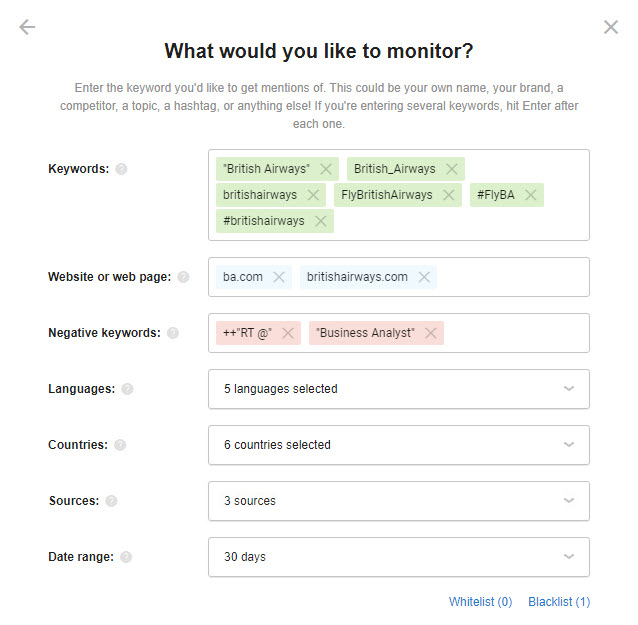
In the sample query above, I would like to focus on 3 sources: Twitter, news outlets, and Web pages from a few European countries and the United States. So, I restrict the Languages and Countries filters to only show me data from the UK, the USA, France, Germany, Italy, and Spain in languages used in all of these countries. For the sake of data clarity, I also make sure to exclude retweets by adding a ++”RT @” line in the Negative keywords field. Also, since the BA abbreviation is used for business analytics, I make sure to exclude that context just as well. On top of that, I add British Airways’s own Twitter account to the Blacklist so as to not see updates from their own page. Here are a couple of results this query has captured:
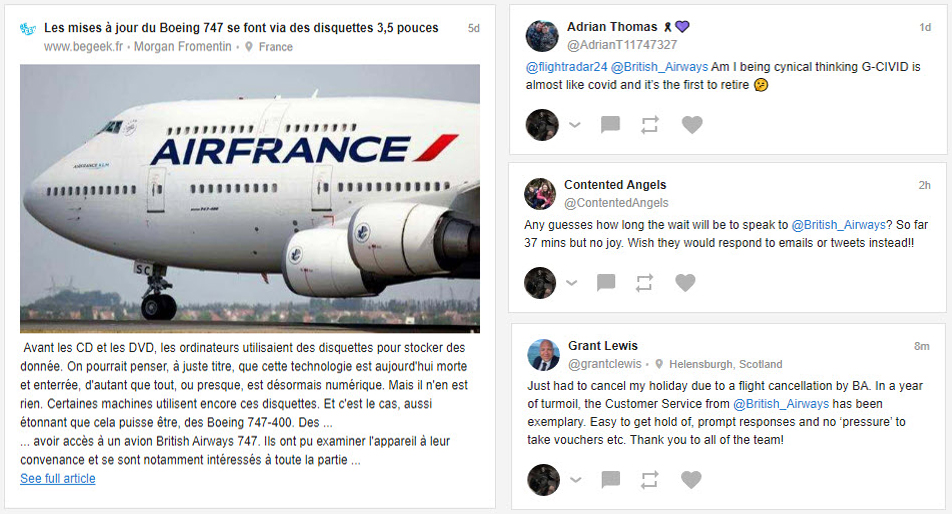
Our next sample query is intended to monitor the presence of a global brand, like IKEA, over the last 6 months in Russia specifically. Here’s how we would set it up:
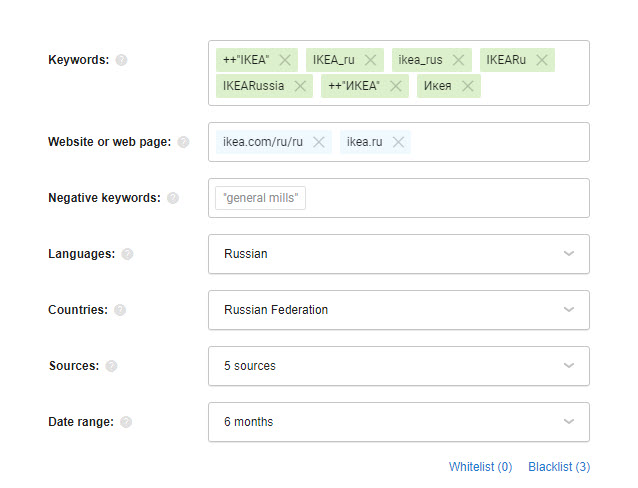
In this query, we’re adding the handles of IKEA’s Russian social media pages, the brand’s name in Russian, and a very common misspelling (Икея) along with the proper brand name itself. We ensure that the uppercase in the brand’s official name is respected by using the case-sensitive keyword format where appropriate. Then, we proceed by adding the two Russian variations of IKEA’s official website. Finally, we go on to restrict the Countries and Languages filters in accordance with the location we intend to monitor. Let’s have a look at a couple of results this query has captured:
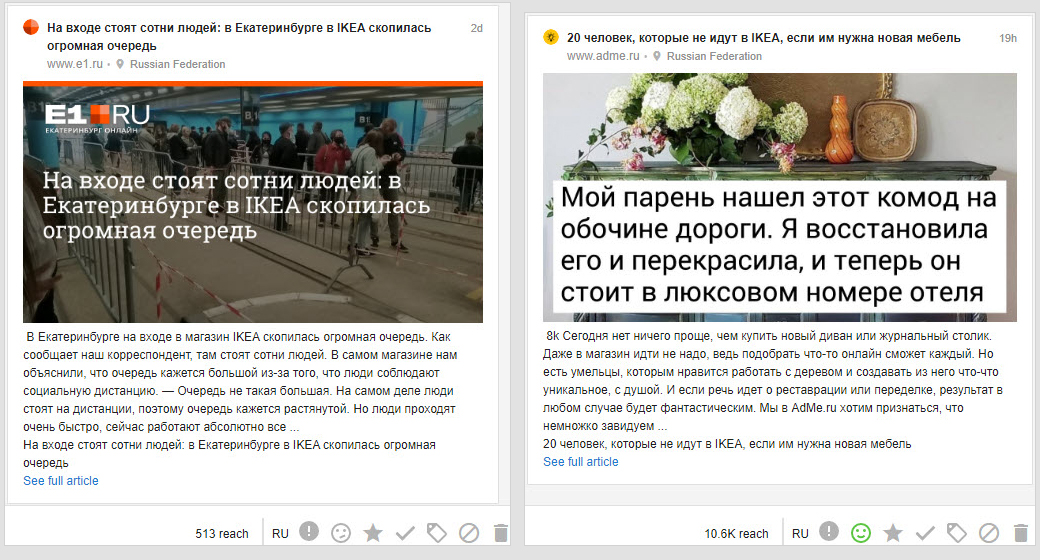
In conclusion
Brand monitoring is a crucial part of marketing for any business with an online presence. The benefits of brand monitoring are many, and it is becoming an increasingly important element of the business-operation puzzle. With brand monitoring tools like Awario, the meticulous monitoring process can be fully automated, sparing your time for other activities while granting all its perks along the way. Here at Awario, we offer a 7-day free trial for you to test the waters and see the automated monitoring in action.
Still in doubt? Feel free to message us via chat, or contact us here. We’ll be happy to assist!













